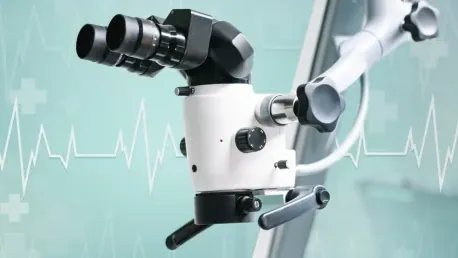The current state and the future prospects of the Global Automation Instrumentation Market are topics of considerable interest, particularly in terms of whether this market can sustain growth even amid rising costs. According to HTF Market Intelligence, the market was valued at USD 22 billion in 2023 and is projected to reach USD 40 billion by 2030, achieving a robust compound annual growth rate (CAGR) of approximately 8.0% from 2024 to 2030. This study spans over 120 pages and offers an in-depth analysis, providing insights into the business strategies of both key players and emerging companies. The research delves into current market conditions, technological advancements, and growth opportunities that lie ahead.
One of the primary themes arising from the report is the significance of automation instrumentation, which includes using sensors, controllers, and other devices to enhance industrial process efficiency, precision, and safety. Automation instrumentation is a critical component in various sectors, helping to streamline operations and achieve higher levels of accuracy and reliability. Key drivers of market growth include the proliferation of smart factories, the increasing demand for industrial automation, and the adoption of Industry 4.0 and IoT (Internet of Things) technologies. Nevertheless, high implementation costs and a shortage of skilled labor are noted challenges that the industry must navigate to maintain momentum.
Key Market Drivers and Challenges
The market for automation instrumentation is significantly influenced by the rapid advancements in technology and the increasing shift towards smart manufacturing. Smart factories leverage connected devices and systems to collect and analyze data, enabling better decision-making and more efficient operations. This transformation is prompting many industries to invest heavily in automation solutions to stay competitive. The demand for industrial automation is further driven by the need to improve productivity, reduce human error, and ensure high-quality production standards. Automation instrumentation, therefore, becomes indispensable in maintaining these competitive advantages.
However, the path to widespread automation is fraught with several obstacles. Among the major challenges identified, high implementation costs stand out as a significant barrier. These costs include not only the initial investment in sophisticated instrumentation but also the ongoing expenses related to maintenance and upgrades. Smaller companies, in particular, may find it difficult to justify such expenditures without clearly defined returns on investment. Additionally, the shortage of skilled labor capable of managing and maintaining automation systems remains a persistent issue. Many industries face a gap between the required skills and the available workforce, necessitating further investment in training programs and educational initiatives.
Major Players and Market Segmentation
Several key players are shaping the landscape of the automation instrumentation market. Prominent companies such as ABB, Siemens, Emerson Electric, Honeywell, Yokogawa, Schneider Electric, Rockwell Automation, Mitsubishi Electric, Endress+Hauser, and Omron are at the forefront of this industry. These firms continue to invest in research and development to innovate and introduce new products that can meet evolving industry requirements. Their strategic partnerships, new product launches, and collaborative efforts are vital for staying competitive and overcoming industry challenges.
The market is also segmented by application and type, offering a comprehensive examination of global and regional markets. Application segments include industrial automation, process control, manufacturing, and oil & gas, each presenting unique opportunities and growth challenges. By understanding these segments, stakeholders can better gauge high-growth scenarios and develop more targeted strategies. On the other hand, segmentation by type includes sensors, controllers, transmitters, and actuators. Each of these components plays a critical role in the overall functionality and effectiveness of automation systems, and their performance directly impacts industrial outcomes.
Geographical Trends and Analysis Tools
From a geographical perspective, regions like North America, Europe, and the Asia Pacific are exhibiting robust growth in the automation instrumentation market. North America remains a significant market due to its advanced industrial infrastructure and continuous investment in innovation. Europe is also a key player, with strong backing from government regulations promoting automation and efficiency. However, it is the Asia Pacific region that is growing at the fastest rate, fueled by rapid industrialization and the adoption of advanced technologies across various sectors. Countries like China, India, and South Korea are leading the charge, making substantial contributions to market expansion.
The report employs various analytical tools, such as SWOT analysis and Porter’s Five Forces analysis, to dissect market dynamics and financial challenges faced by industry players. These tools provide a detailed understanding of the strengths, weaknesses, opportunities, and threats in the market. Additionally, they help to identify the competitive pressures and strategic options available to key stakeholders. This level of analysis is crucial for making informed decisions and devising effective strategies to navigate the complex landscape of the automation instrumentation market. The findings underscore the importance of technological innovation and strategic planning in achieving sustainable growth amidst rising costs.
Conclusion
The Global Automation Instrumentation Market’s current state and future prospects are of considerable interest, especially regarding its potential for sustained growth amid rising costs. HTF Market Intelligence valued the market at $22 billion in 2023 and projects it will reach $40 billion by 2030, with a compound annual growth rate (CAGR) of around 8.0% from 2024 to 2030. The 120-page study provides an in-depth analysis of business strategies from key players and emerging companies. It examines current market conditions, technological advancements, and future growth opportunities.
A key theme from the report is the importance of automation instrumentation, which involves using sensors, controllers, and other devices to boost industrial process efficiency, precision, and safety. This technology is essential across various sectors, streamlining operations, and enhancing accuracy and reliability. Market growth is driven by the rise of smart factories, increasing industrial automation demand, and the adoption of Industry 4.0 and IoT technologies. Despite these positives, the industry faces challenges such as high implementation costs and a lack of skilled labor, which must be tackled to maintain growth.









